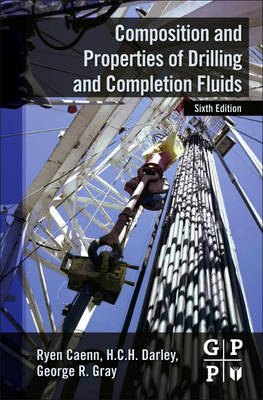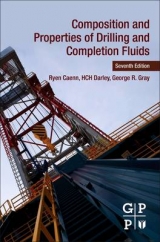
Composition and Properties of Drilling and Completion Fluids
Gulf Professional Publishing (Verlag)
978-0-12-383858-2 (ISBN)
- Titel erscheint in neuer Auflage
- Artikel merken
The petroleum industry in general has been dominated by engineers and production specialists. The upstream segment of the industry is dominated by drilling/completion engineers. Usually, neither of those disciplines have a great deal of training in the chemistry aspects of drilling and completing a well prior to its going on production. The chemistry of drilling fluids and completion fluids have a profound effect on the success of a well. For example, historically the drilling fluid costs to drill a well have averaged around 7% of the overall cost of the well, before completion. The successful delivery of up to 100% of that wellbore, in many cases may be attributable to the fluid used.
Considered the "bible" of the industry, Composition and Properties of Drilling and Completion Fluids, first written by Walter Rogers in 1948, and updated on a regular basis thereafter, is a key tool to achieving successful delivery of the wellbore.
In its Sixth Edition, Composition and Properties of Drilling and Completion Fluids has been updated and revised to incorporate new information on technology, economic, and political issues that have impacted the use of fluids to drill and complete oil and gas wells. With updated content on Completion Fluids and Reservoir Drilling Fluids, Health, Safety & Environment, Drilling Fluid Systems and Products, new fluid systems and additives from both chemical and engineering perspectives, Wellbore Stability, adding the new R&D on water-based muds, and with increased content on Equipment and Procedures for Evaluating Drilling Fluid Performance in light of the advent of digital technology and better manufacturing techniques, Composition and Properties of Drilling and Completion Fluids has been thoroughly updated to meet the drilling and completion engineer's needs.
Ryen Caenn specializes in the technology transfer for all aspects of drilling and completion fluids technologies. He has worked in the industry for over 50 years, starting as a mud engineer in 1966, and for over 35 years as consultant to oil companies, fluid service companies and chemical manufacturers in the US and international drilling and production chemicals industry. Ryen currently conducts training sessions worldwide on drilling and completion fluid technology applications and is active in many organizations including the AADE and SPE. He has been a voting member of the API Drilling Fluid Standards Committee since 1974. Ryen earned a BA degree in Chemistry from Oklahoma State University. Nicknamed "Slim Darley", the late H.C.H. Darley was formerly a member of the Institute of Petroleum in London, an active member within SPE, and a Researcher for Shell for almost 25 years as well as a Consultant. Darley earned a BS degree in Petroleum Engineering from Birmingham University in the UK, and Mr. Darley passed away in 1996. The late George Gray, or "Doc Gray", as he was known in the industry, was a drilling fluids technologist for NL Baroid for over 30 years and a pioneer in the development of drilling fluids technology. He willingly served on innumerable committees and held various offices in technical societies, including Director and Vice President of SPE and various poistions within the American Chemical Society and American Petroleum Institute. George earned a BS degree from Texas Christian University and a MS and PHD degree from Rice University and was a registered professional engineer in the state of Texas. George passed away in 1983.
Chapter 1: Introduction to Drilling Fluids
Chapter 2: The Development of Drilling Fluids Technology
Chapter 3: Equipment and Procedures for Evaluating Drilling Fluid Performance
Chapter 4: Clay Mineralogy and the Colloid Chemistry of Drilling Fluids
Chapter 5: The Rheology of Drilling Fluids
Chapter 6: The Filtration Properties of Drilling Fluids
Chapter 7: The Surface Chemistry of Drilling Fluids
Chapter 8: Hole Stability
Chapter 9: Drilling Problems Related to Drilling Fluids
Chapter 10: Completion, Workover, and Packer Fluids
Chapter 11: Drilling Fluid Components
Appendix A: Conversion Factors
Appendix B: Abbreviations Used in References
Author Index
Subject Index
| Erscheint lt. Verlag | 29.9.2011 |
|---|---|
| Sprache | englisch |
| Maße | 152 x 229 mm |
| Gewicht | 1070 g |
| Themenwelt | Technik ► Bergbau |
| Technik ► Elektrotechnik / Energietechnik | |
| ISBN-10 | 0-12-383858-4 / 0123838584 |
| ISBN-13 | 978-0-12-383858-2 / 9780123838582 |
| Zustand | Neuware |
| Haben Sie eine Frage zum Produkt? |
aus dem Bereich



